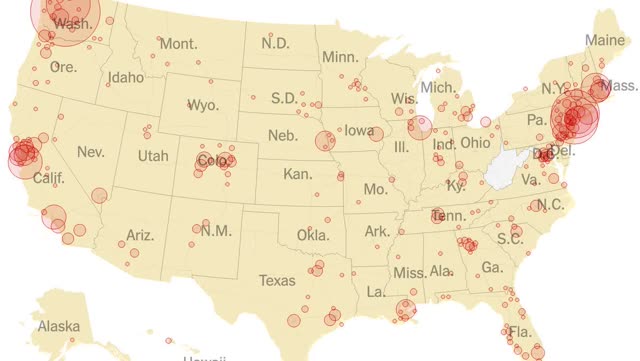Coronavirus update: reason for alarm; (small) reason for hope This weekend has continued the discouraging news: reports just about everywhere that the Young Invulnerables packed the bars Friday night; the Petri dishes of airport security lines packed with Americans returning from Europe; and personally, two friends who I have known for almost 40 years getting very sick this past week and not able to be tested for coronavirus (one of whom by the way went in to work Friday to drive school buses full of kids because so many other drivers called out). All of these are going to be vectors for continued transmission of the virus. In that regard, let me repost the graph from Jim Bianco that I ran last week. Because we are now 4 days into his linear projection
Topics:
NewDealdemocrat considers the following as important: Healthcare, Journalism, Taxes/regulation
This could be interesting, too:
Bill Haskell writes Families Struggle Paying for Child Care While Working
Joel Eissenberg writes RFK Jr. blames the victims
NewDealdemocrat writes Constitutional Interregnum
Bill Haskell writes Know Nothings
Coronavirus update: reason for alarm; (small) reason for hope
This weekend has continued the discouraging news: reports just about everywhere that the Young Invulnerables packed the bars Friday night; the Petri dishes of airport security lines packed with Americans returning from Europe; and personally, two friends who I have known for almost 40 years getting very sick this past week and not able to be tested for coronavirus (one of whom by the way went in to work Friday to drive school buses full of kids because so many other drivers called out). All of these are going to be vectors for continued transmission of the virus.
In that regard, let me repost the graph from Jim Bianco that I ran last week. Because we are now 4 days into his linear projection of an exponential curve of coronavirus transmissions. Here’s the graph:

And here is how his projections compare with the actual numbers I pulled each day from the Johns Hopkins site:
3/14 3036 2952
So far Bianco’s projections have been almost exactly correct.
If reality follows his projections, in 4 days there will be 10,000 cases.
In 7 days there will be 25,000 cases.
I have not seen any government action significant enough to stop this exponential projection being correct.
And by the way, if the diagnoses continue to climb thereafter at the rate of 2.5x every 3 days as shown in Bianco’s graph, here are the next 30 days after March 22:
4/21 2.4 million cases
If that is cause for grave alarm, there is at least some reason to suspect that the disease will at least slow it spread, as hotter weather arrives.
Below is a map of coronavirus cases by metro areas in the US:

Note that all of the most affected areas are in the North. Despite LA’s deep economic and immigrant ties to Asia, it is not nearly so affected as San Francisco or Seattle. And despite Florida’s huge elderly population, it is not nearly so affected as New York or Boston.
This is what economists call a “natural experiment.” It will be worth watching to see if the North/South dichotomy continues. *IF* the more optimistic scenario happens, that will give the US 4 to 6 months of relative breathing space to adopt more effective measures, and possibly at least a partially effective vaccine might be developed to be used on those most at risk.
Finally, I should note that I am a fan of K.I.S.S. metrics. They are easy to follow and test, and can yield results close to those of far more sophisticated models.
Also, as I often point out, whenever human behavior is observed, the humans observe back – and change their behavior as a result of their knowledge of what was observed in them previously. If the American public becomes convinced that the epidemic is out of control, they are likely to self-isolate without any government action at all. And that would change the exponential spread.
